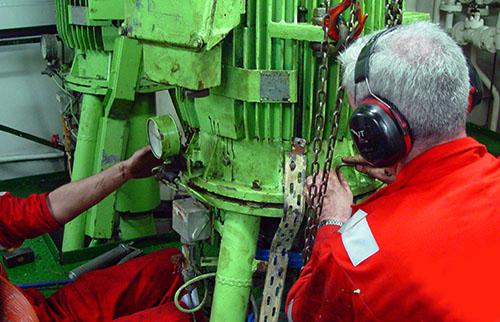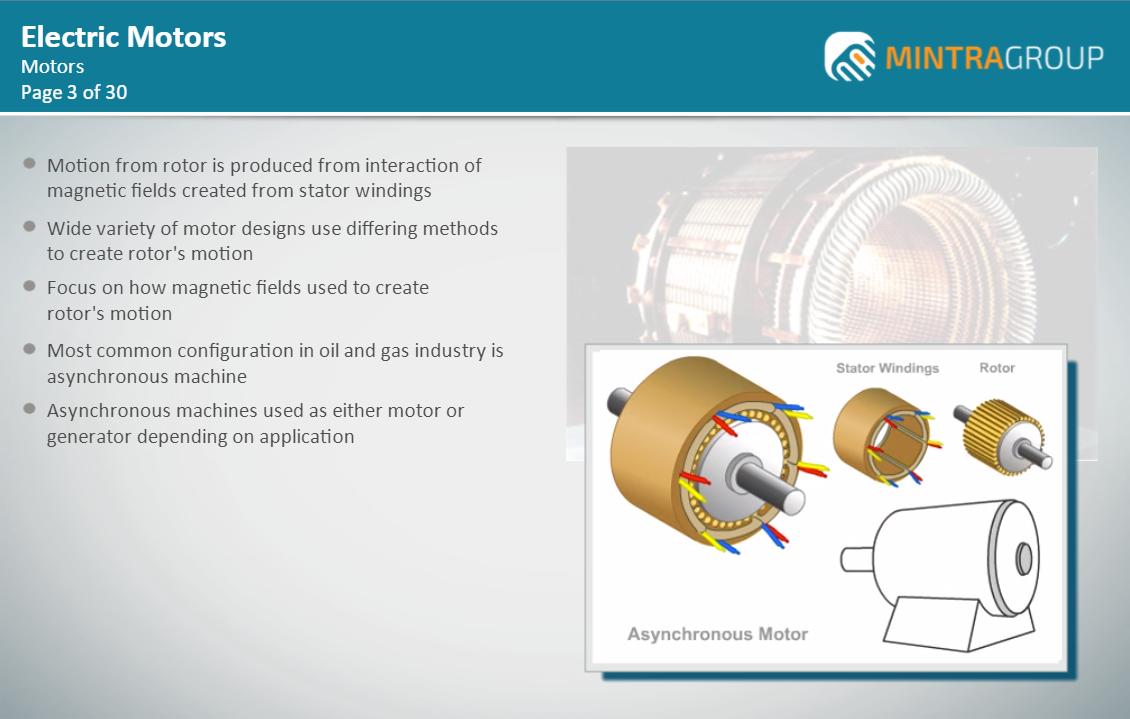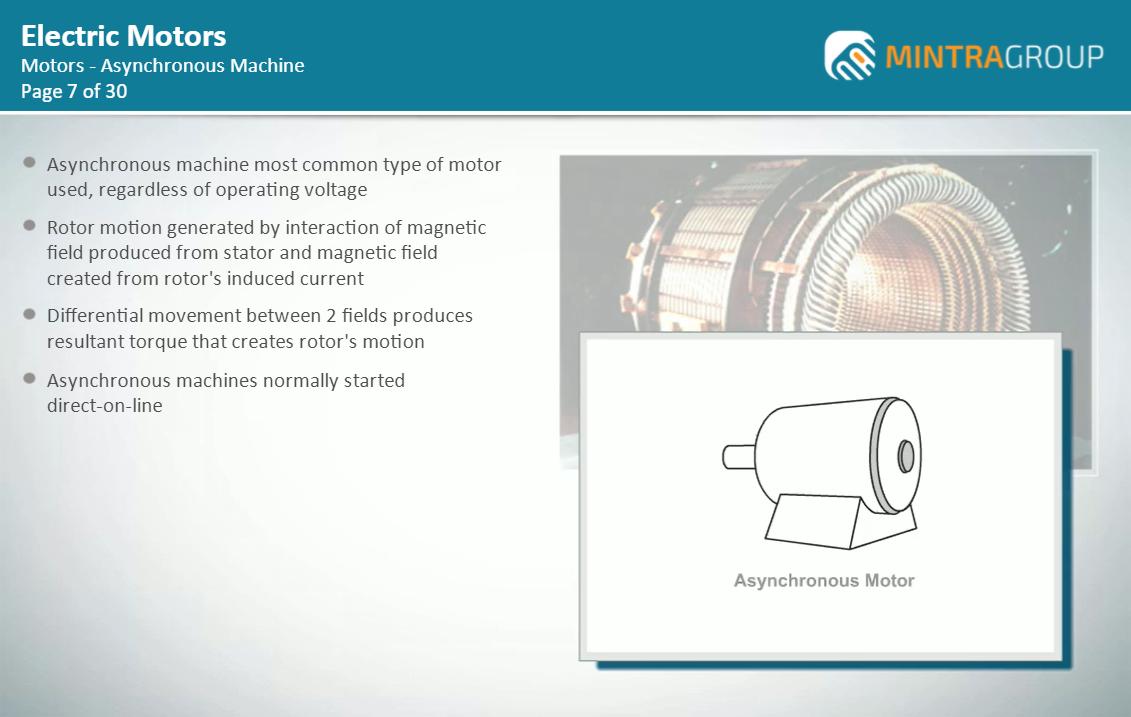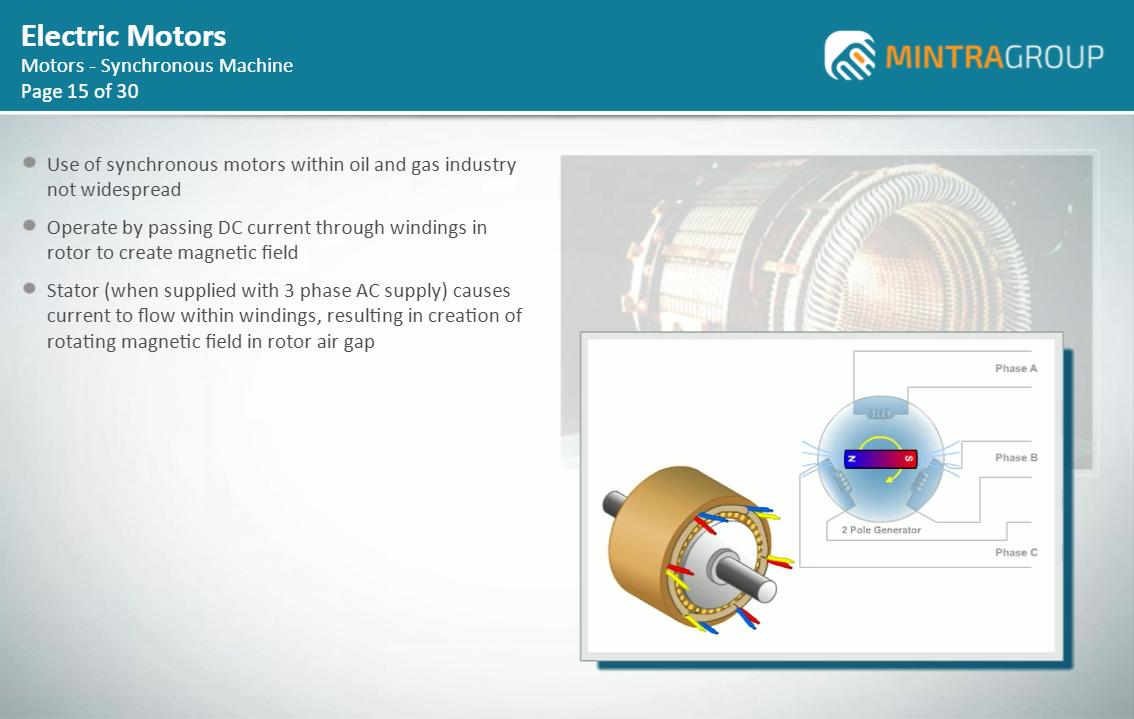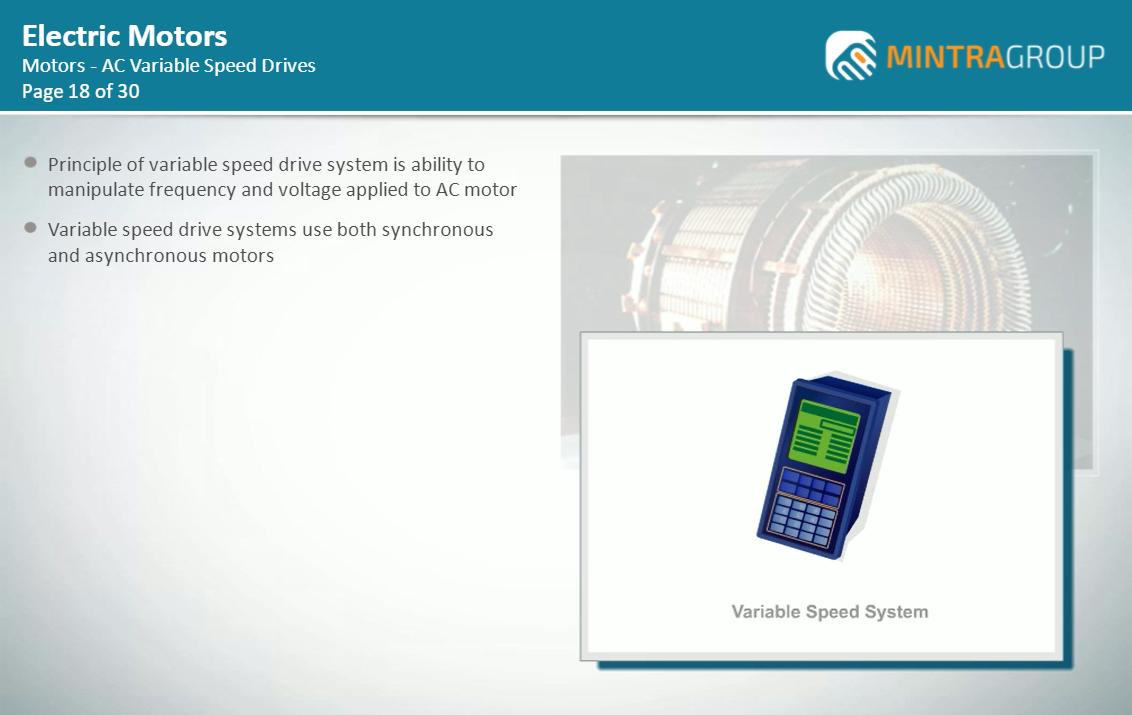Buy and assign to
multiple learners
Instant access
via email link
Instant certificate
via email
Further Information - Electric Motors Training
Description
Who is the course for?
This Electric Motors Training course is aimed at individuals in the oil and gas industry who are required to work with motors, or who require a basic understanding of their operation.
Is previous experience required?
You do not need prior knowledge or experience to complete this course and it is assumed that you are competent in your designated role.
How will the course benefit me?
Motors are used throughout the oil and gas industry to power plant and machinery. This course will give you a basic overview of the different types of motor commonly used and how they operate.
The knowledge gained in this course will help you to stay safe when you are required to work with each type of motor. It will also identify the key differences between the motor types.
How will the course benefit my company?
By ensuring you are fully aware of how each type of motor functions, you are better able to work with motors safely which can help to reduce the risk of incidents at your worksite.
What standards are referenced in the course?
This course does not refer to specific legislation or standards but is written to current HSE guidelines, industry best practice and standard operating procedures.
Is there an assessment?
Once you have completed the course, you will be asked a series of questions to check your knowledge and understanding. These are based on the learning objectives for the course and have a pass mark of 80%.
Learning Objectives
• Identify different types of motors
• Describe asynchronous motors
• Describe synchronous motors
• Describe AC variable speed drives
• Describe DC motors
• Describe single phase motors
Assessment
Exam in the e-learning course
System Requirements
- Internet access - users will need a device with a web browser and internet connection
- System - runs on computers, tablets and mobile devices using Windows 7 and above and MAC OS devices running IOS 11 and above
- Browsers - Edge, Chrome, Firefox and Safari
- Minimum browser size – none
- Audio – requires device speaker or headphones
Reviews
Insights & News
At Mintra, we're so much more than just a team—we're a force driving innovation and excellence in maritime training across Europe.
We’re excited to be taking the stage at one of Europe’s leading showcases of organisational learning.
We are delighted to share the exciting news that our People and Culture team has been shortlisted for the prestigious cHeRries Awards!
